Share this article
80% of organizations aiming to scale their business will fail without a modern approach to data governance.
Traditionally, data governance was synonymous with centralized control, rules, and policies — something conjured up by middle managers to add friction to data scientists’ lives.
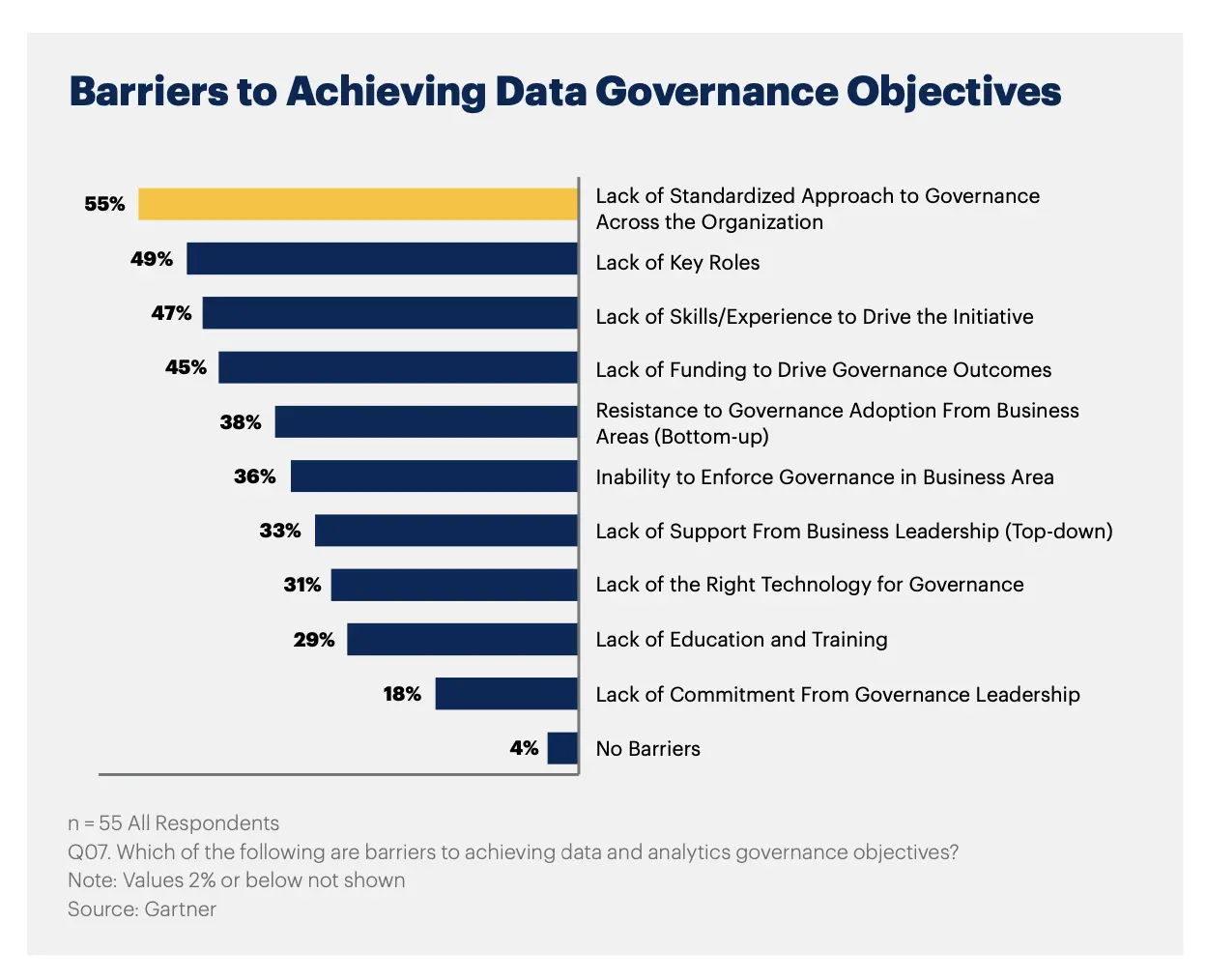
Top 10 barriers to achieving data governance objectives. Source: Gartner.
That’s why modern data governance must be community-led, centered on collaboration and data democratization, with privacy at its core. Everyone in an organization should be able to access, understand, and use the right data to unearth valuable business insights.
In this article, we’ll cover the principles behind such an approach to governance. We’ll follow that up with an implementation action plan and data governance tools that can help.
Table of Contents #
- What is data governance?
- Traditional vs. modern data governance
- Benefits
- Challenges
- Principles
- How Atlan handles data governance
- What Atlan has to offer
- Bottom line
- Data governance: Related reads
What is data governance? #
Gartner defines data governance as a way to “specify decision rights and accountability to ensure appropriate behavior as organizations seek to value, create, consume, and control their data, analytics, and information assets.”
Most data governance definitions focus on establishing organization-wide policies on data use. Traditionally, data governance was all about controlling data for compliance purposes. Employees associated these measures with bureaucracy and red tape.
Besides a top-down approach, traditional data governance models also involved appointing a data steward responsible for enforcing data governance policies and standards.
But with today’s ever-increasing data volumes, this isn’t scalable. We need a new approach to data governance.
Traditional vs. modern data governance: What’s the difference? #
The first step is to change employee’s perception of data governance. It’s not about control, red tape, and bottlenecks. Instead, data governance ensures your data is trustworthy, useful, and easily available.
That’s why we define data governance as a personalized, community-centered approach toward data enablement.
To implement governance at scale, everyone should take these principles to heart::
- The goal of data governance isn’t merely regulatory compliance
- The purpose of governance is to increase the value of data
- Everyone — not just data stewards or data governance steering committees — is responsible for data governance
| Traditional approach to data governance | Modern data governance |
|---|---|
| A centralized, top-down approach focused on controlling data access | A decentralized, community-centered approach focused on data enablement |
| Requires enforcers — data stewards and steering committees | Combines traditional stewardship with self-governing behaviors to distribute the work and ensure everyone is responsible and held accountable |
| Attempts to ensure data governance after the fact with post-hoc data testing and validation | Shifts data governance left, incorporating tagging and validation early in the data lifecycle |
| Involves manual processes in granting approvals, tagging and classifying data, and more | Automates as many processes as possible to eliminate human error and achieve data governance at scale |
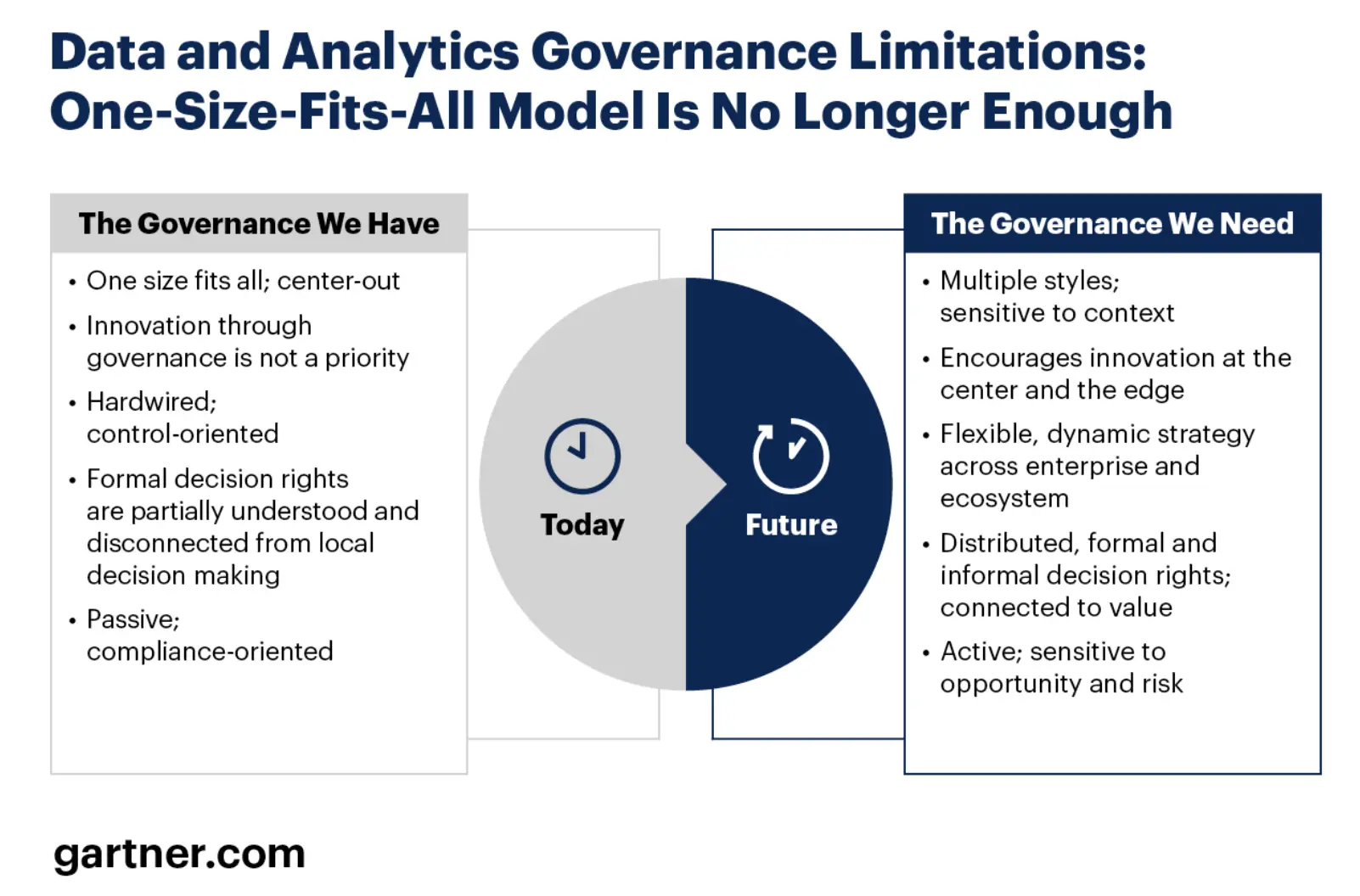
Tradtional and modern data governance: What is the difference? Source: Gartner.
Now let’s look at the benefits of implementing data governance at scale.
Benefits of data governance #
Good governance can maximize the value of data assets and help your data teams work better. The core benefits of modern data governance are:
- Effective metadata management leads to better data security and accuracy
- Better productivity and faster data discovery by eliminating time spent on non-value-added tasks
- Lower risks and costs due to poor data management and manual processes
Let’s explore each aspect further.
1. Effective metadata management #
Metadata management requires a reliable single source of truth and enterprise-scale visibility into all data assets.
Data governance ensures that data is gathered, organized, and used appropriately, without redundancies. The goal is to know what data you have, where it came from, how it has changed, and how you can use it.
It all starts with metadata. For instance, Dr. Martens streamlined data governance by creating a streamlined modern data stack, with Atlan serving as their single metadata layer and the single source of truth. Before this change, questions about the impact of data changes on downstream data sources would take significant time and human capital to answer. With a strong metadata management system in place, Dr. Martens could answer those questions in seconds.
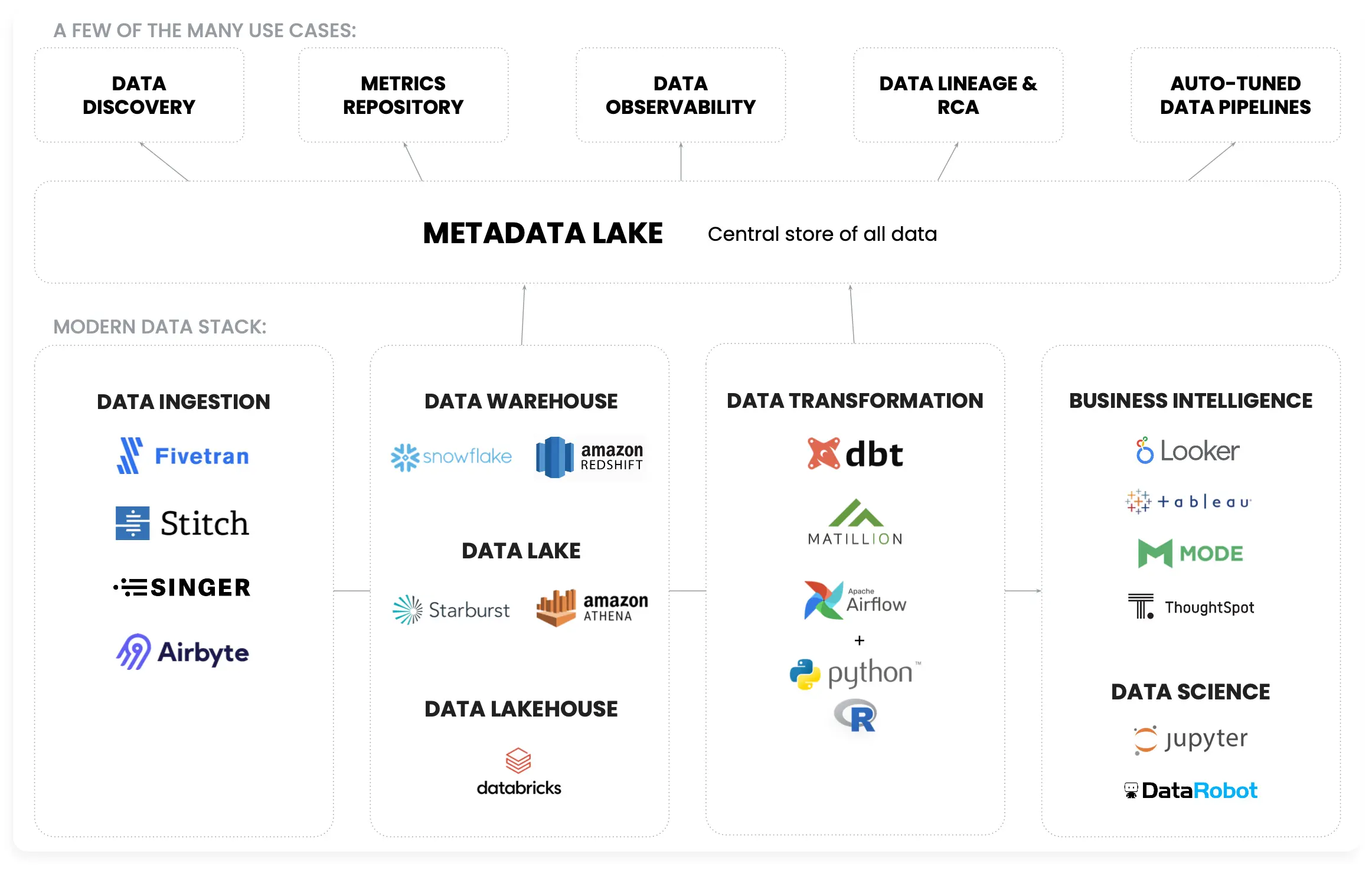
Robust metadata management is the key to better data governance. Source: Atlan.
2. Better productivity and faster data discovery #
According to Mike Loukides from O’Reilly Media, Inc:
“Data governance and data discovery go together. You can’t use your data if you can’t find it. You can’t use your data if you don’t even know what data you have.”
Without good governance, your teams end up spending 30% of their time on non-value-added tasks such as data sourcing, processing, cleanup, and manual reporting. This affects their productivity substantially.
On the other hand, easy access to the right data helps data teams discover opportunities and insights faster, without wasting any resources.
Take, Sands Capital, which talked to its users to discover what they needed for effective data discovery. Ultimately, the company realized it needed a single metadata management system to enable discovery and build trust in its data.
Using Atlan, users could discover the answers they needed to data questions without data on the data engineering team. This enhanced visibility cut down on fire drills and frantic Slack threads, saving the company both time and money.
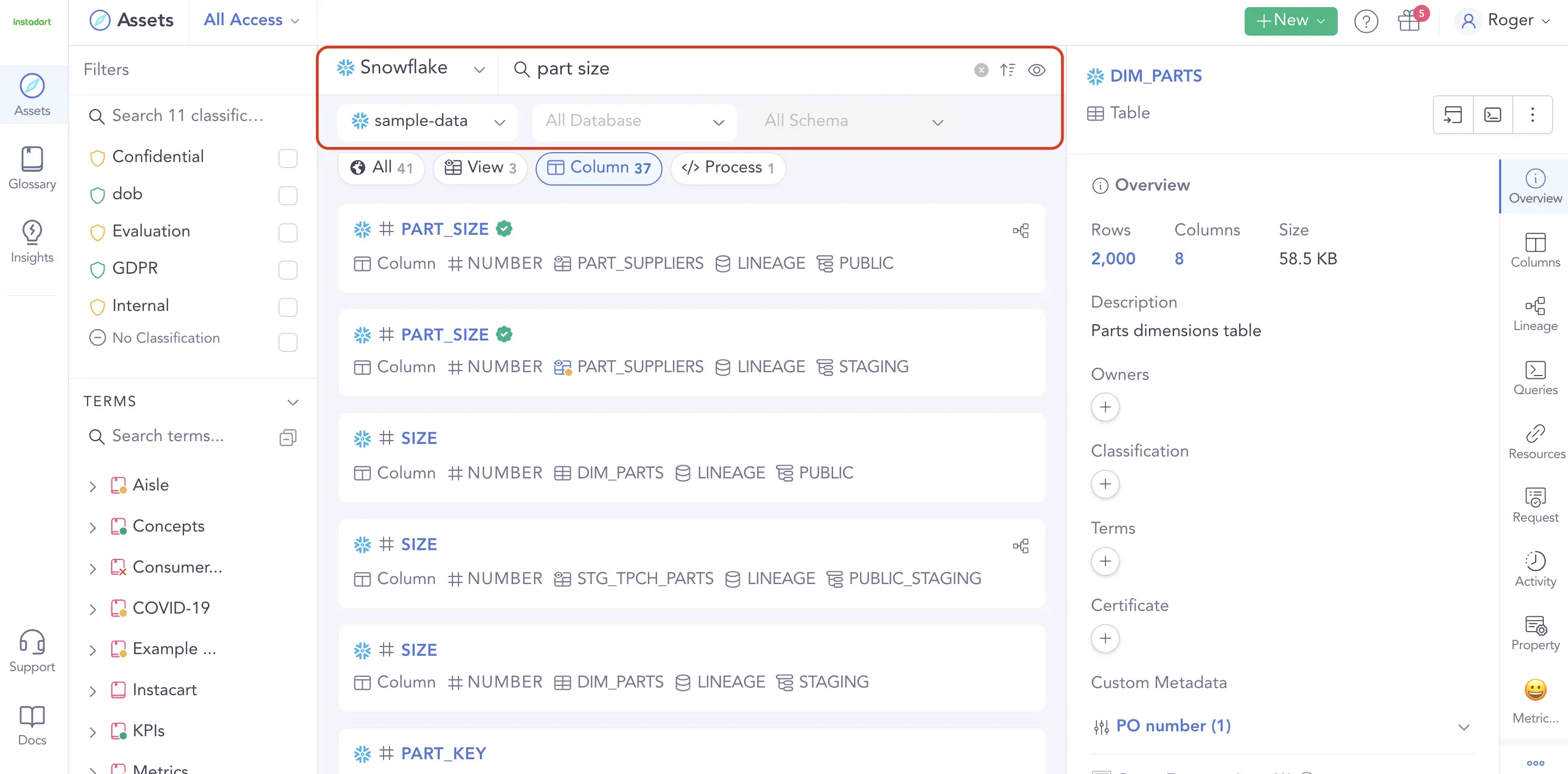
Faster data discovery: Key building block of modern data governance. Source: Atlan.
3. Lower risks and costs due to poor data management and manual processes #
According to McKinsey’s 2019 Global Data Transformation Survey, data governance was one of the three reasons for leading firms to have “eliminated millions in cost from their data ecosystems and enabled digital and analytics use cases.”
Moreover, the companies underinvesting in governance — think unsustainable, manual processes and temporary controls — also exposed themselves to regulatory risk.
In 2020, a Citibank employee made an error while manually adjusting a Revlon loan. This error forced payment of the $900 million loan in full instead of the usual monthly interest payment.
Citibank had to deal with creditors who refused to return the money. Worse, the Office of the Comptroller of the Currency (OCC) fined the bank $400 million for improper data governance measures. These included persistent issues in risk management and internal controls.
The OCC also demanded a “re-engineering of processes to… maximize straight-through processing and minimize manual inputting and adjustments.” (They mean the Revlon fiasco.)
Incidents like these are why many companies are replacing error-prone manual processes with automated data governance tools. Tide, a UK-based digital bank, sought to improve its GDPR right-to-erasure compliance for the 500,000 small business customers it manages. Using Atlan Playbooks to automate identifying, tagging, and securing data, the company reduced a 50-day manual process into mere hours of work.
Read more: To further explore the benefits of data governance, check out this article on how good governance can help build great data teams.
Challenges of data governance #
Even when done with the right mindset, implementing data governance effectively carries challenges. Below are some big-ticket issues your organization should address up-front during the planning and design processes of any successful data governance initiative.
- Organizational buy-in. A comprehensive data governance program is a significant change that impacts all areas of the company. It requires up-front investment in processes, tools, and training. Without senior leadership buy-in and approval of major stakeholders, the initiative will likely be over before it gets started. Make sure to forge a strong case that explicitly details the business value the organization will gain from a comprehensive data governance initiative.
- Lack of standardization. According to Gartner, poor-quality data costs companies $12.9 million annually. Data governance not only improves security and compliance, but it also improves overall data quality. But that’s impossible if every team reinvents its standards for data formats, data types, and data freshness.Devote time during the data governance definition process to creating standards for data quality and selecting solutions - such as a data catalog - that will enable teams to apply these standards easily to their data.
- Lack of self-service data management tools. Stakeholders are more apt to view data governance negatively if every step in the process requires manual approvals and three weeks of work by the data engineering team. Ask what tools and processes your company can provide to stakeholders to enable working with data in an automated, on-demand fashion. This may include self-service reporting or even full self-service data domain management via a data mesh architecture.
Want to make data governance a business priority? We can help you craft a plan that’s too good to ignore! 👉 Talk to us
Principles driving modern data governance #
Four principles are central to ensuring effective data governance for the modern data stack:
- Governance is for data and analytics
- Governance is personalized
- Governance is community-led
- Governance is a part of your daily workflow
1. Governance is for data and analytics #
As Gartner highlights in its definition, data governance must extend to data, analytics, and information assets.
It’s important to ensure data sharing is easy and well-managed. But it’s also vital to ensure the same applies to analytics. That’s because data assets go beyond raw data - they extend to dashboards, models, and analytics. Analytics also has real, measurable value, and, as such, must be similarly governed.
2. Governance is personalized #
As mentioned earlier, your governance policies should be built around your data team’s projects or use cases - not the other way around.
For instance, you may define policies that mirror your finance team’s projects and curate financial data assets under one roof. That will enable your finance team to access all public financial KPIs automatically.
Similarly, you can create persona-based policies by displaying custom metadata relevant to each user. This requires understanding the various data domains, projects, and user roles thoroughly and setting up rules that support such personalized experiences.
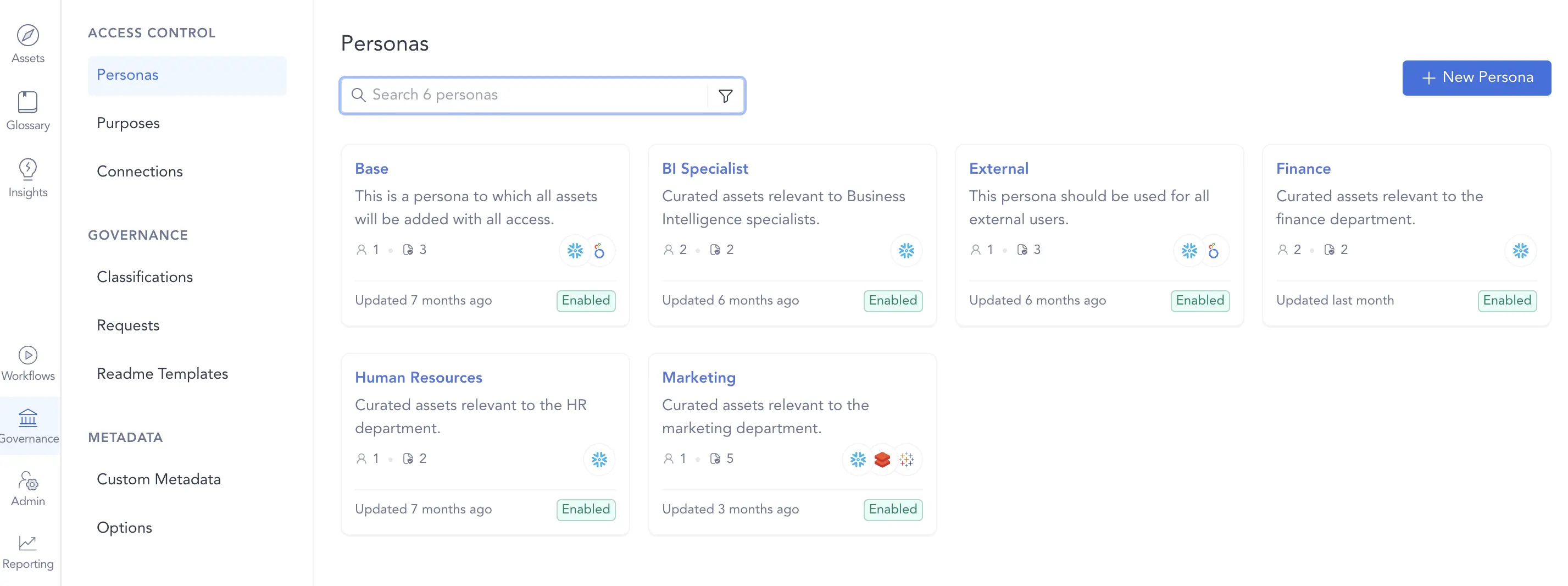
Atlan's "Personas" are a way to control access to users who belong to a group/domain. Source: Atlan.
3. Governance is community-led #
Across an organization, different teams will have different relationships with data. Even though product and sales teams refer to the same data sets, they use them differently.
The product team might use customer survey results to decide which product features to build. Meanwhile, the marketing team might use that data to decide which keywords to target.
If both teams are to access and use the data effectively, they must be involved in defining the policies around that data. That means how it gets categorized and what rules govern its usage. This requires a collaborative approach to governance where the processes, policies, and roles that comprise data governance are crowd-sourced.
Such an approach also ensures that your people truly adopt the governance structure you build.
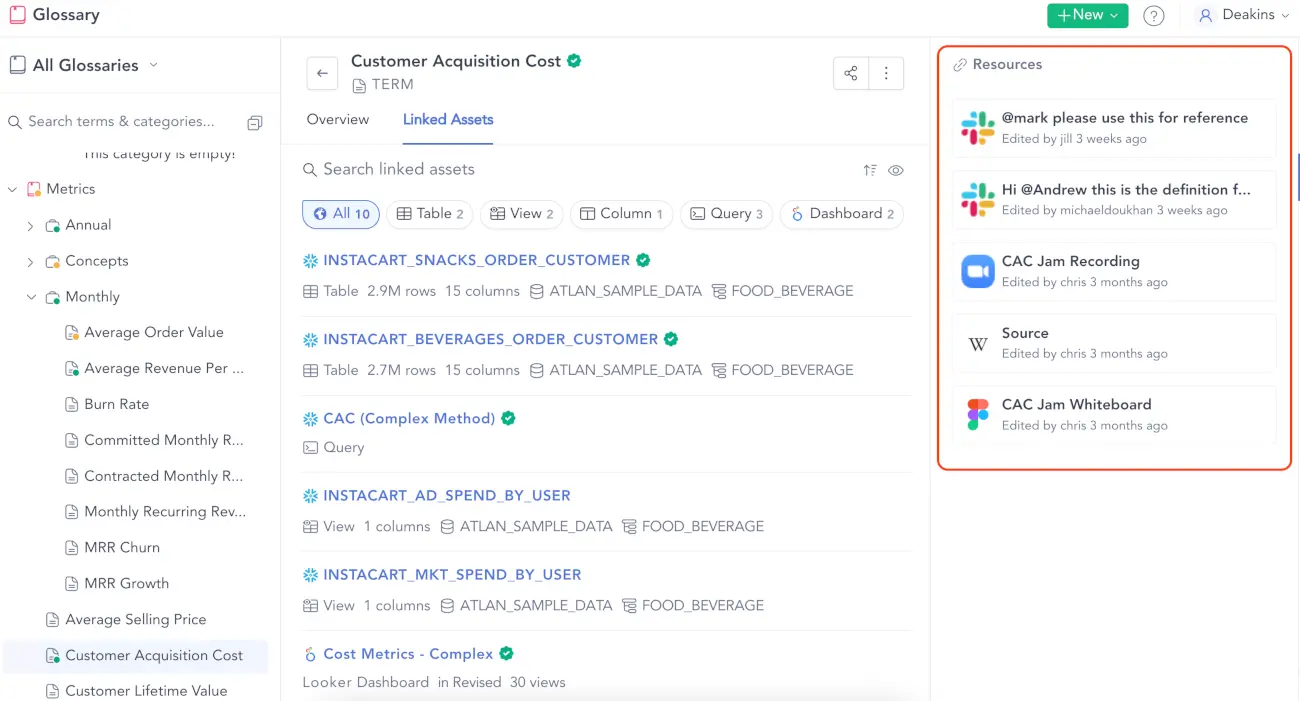
Modern data governance tools must foster collaboration. Source: Atlan.
4. Governance is a part of your daily workflow #
If governance is to be integral to your organization’s daily workflow, it cannot be an extra step in your operations.
For instance, everyone should be able to know what data exists within the organization and look up business definitions, descriptions, classifications, and more. This ensures that while request processes exist for gaining access, nobody’s barred from seeing what data is available.
Let’s revisit the previous example of product and sales teams. Say someone from sales comes across a dataset on product usage that doesn’t have a description or an owner. They can make a request or offer a suggestion to the product team (i.e., the domain owner) via Slack. The product team can review the request and then decide to approve or reject it.
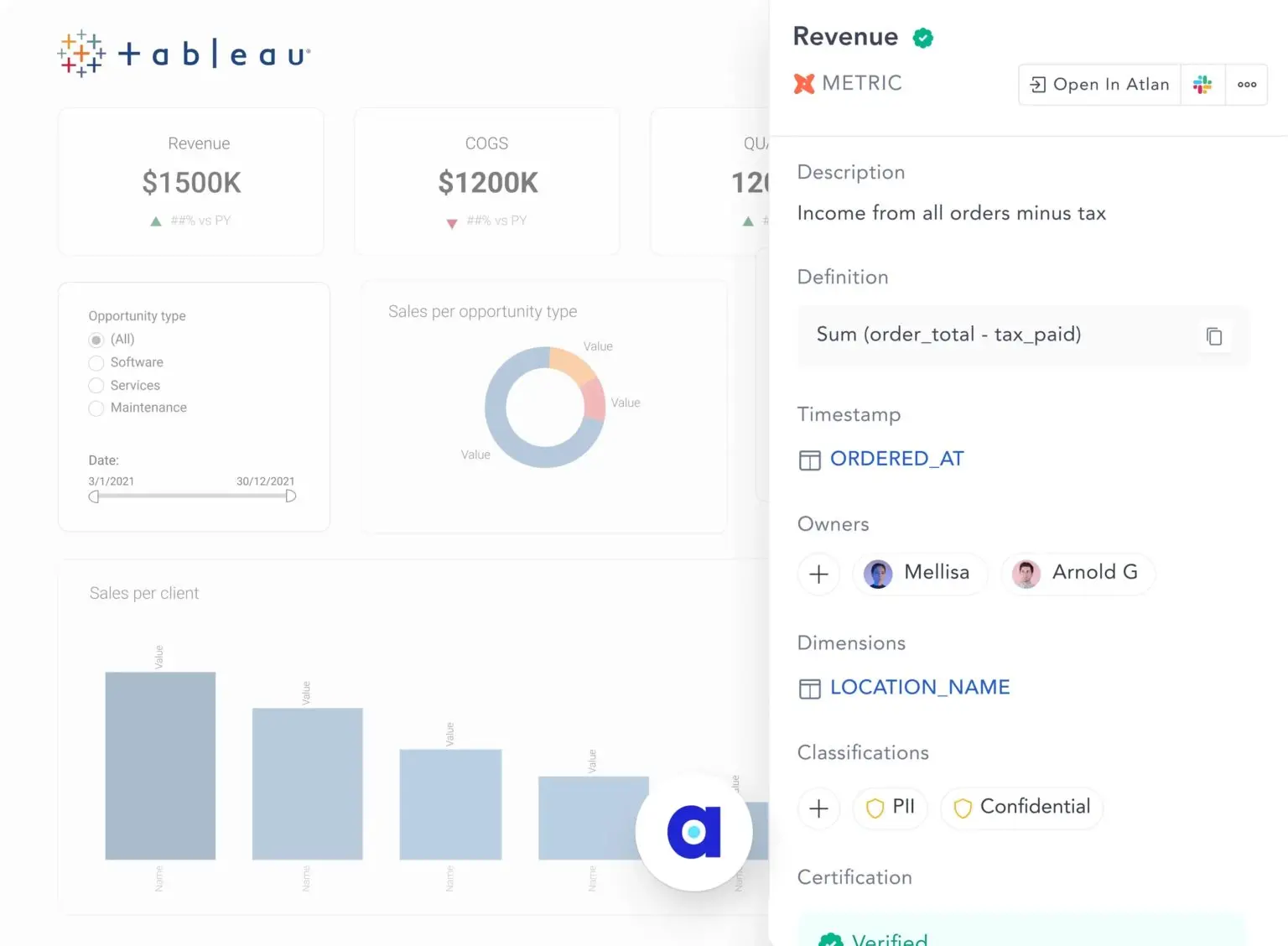
Effective data governance enables users to find and understand data right with in the tools they use everyday . Source: Atlan.
Read more: Delve further into the principles of data governance by exploring this article.
How Atlan handles data governance #
Atlan is an active data governance platform that offers a scalable way to secure your data while ensuring data democratization. Atlan’s design, refined by hundreds of projects, gives data teams the governance tools they need to activate their metadata.
At Atlan, we don’t just provide tech. We help organizations build full data governance plans. This includes restructuring production pipelines, reorganizing teams, and training personnel.
With tech and training together, Atlan enables teams to handle more of their own data products, leaving core data teams more agile and productive. This distributed approach to data governance has helped organizations like Nasdaq, Autodesk, and Fox cut delivery times for data products, improve understanding of data context, and build trust in their data.
What Atlan has to offer #
As a modern data governance platform, Atlan offers:
- Auto-tagging and classification
- Role-based and policy-based access controls (i.e., RBAC and ABAC)
- End-to-end column-level data lineage mapping
- Auto-policy propagation via lineage hierarchy
- Simple data sharing and collaboration
- Rich context via READMEs, business glossary, descriptions, and more
Atlan enables implementing secure data governance at enterprise scale. Using Atlan, you can customize your data governance policies according to data team personas, projects, or domains, i.e., RBAC (role-based access controls) and ABAC (attribute-based access control). You can also build custom bots to auto-classify sensitive data and propagate policies automatically via column-level lineage mapping.
Additionally, Atlan’s open API architecture allows you to integrate it with popular modern data stack tools such as Databricks, Snowflake, and Amazon S3. With Atlan, you can set up an interoperable data ecosystem no matter how complex your data architecture.
Check out all the supported sources on Atlan.
Data governance: Bottom line #
As the modern data stack has evolved, the diversity of data, its consumers, and the technologies used have also expanded. We’re in an era where new data and analytics use cases crop up daily.
In this environment, building a rigid set of policies that define data and its use in consultation with a handful of middle managers won’t cut it. The reason most data governance programs fail is because of a one-dimensional approach focusing on control, restrictions, and bureaucratic processes.
That’s why the perception toward data governance must change. Data governance programs must be seen as a way to extract value from data. They should be approached holistically and involve everyone in the process.
Are you evaluating and looking to deploy best-in-class data access governance for your data ecosystem without compromising on data democratization? If so, give Atlan a spin.
Related reads on data governance: #
- What is Data Governance? It’s Importance, Principles & How to Get Started?
- Data Governance Framework — Examples, Templates, Standards, Best practices & How to Create One?
- Snowflake Data Governance — Features, Frameworks & Best practices
- Open Source Data Governance Tools - 7 Best to Consider in 2024
- Data Governance Policy: Examples, Templates & How to Write One
- 7 Best Practices for Data Governance to Follow in 2024
- Benefits of Data Governance: 4 Ways It Helps Build Great Data Teams
- Data Governance Roles and Responsibilities: A Quick Round-Up
- Key Objectives of Data Governance: How Should You Think About Them?
- The 3 Principles of Data Governance: Pillars of a Modern Data Culture
- A Guide to Gartner Data Governance Research — Market Guides, Hype Cycles, and Peer Reviews
- 5 Popular Data Governance Certification & Training in 2024
- 8 Best Data Governance Books Every Data Practitioner Should Read in 2024
- Automated Data Governance: How Does It Help You Manage Access, Security & More at Scale?
- Data Governance and Compliance: Act of Checks & Balances
- Data Governance vs. Data Management: What’s the Difference?
- Enterprise Data Governance — Basics, Strategy, Key Challenges, Benefits & Best Practices.
Share this article











